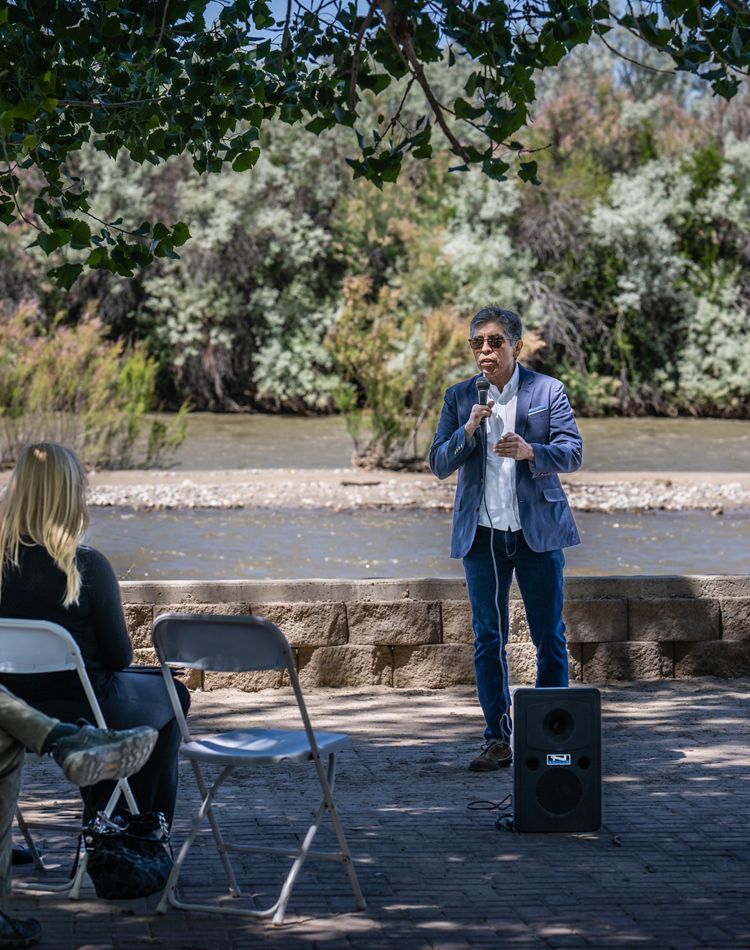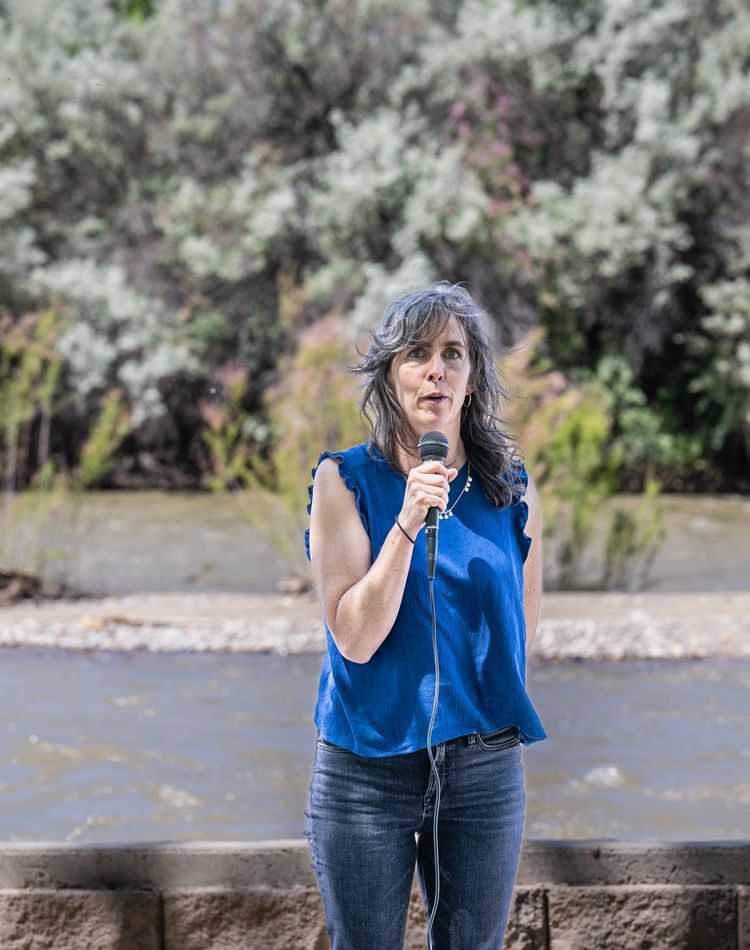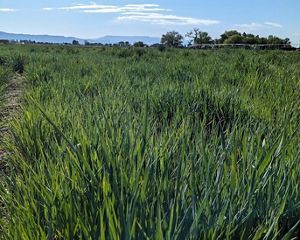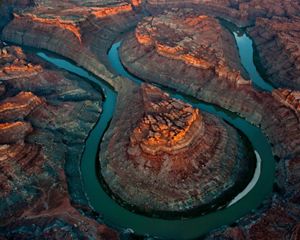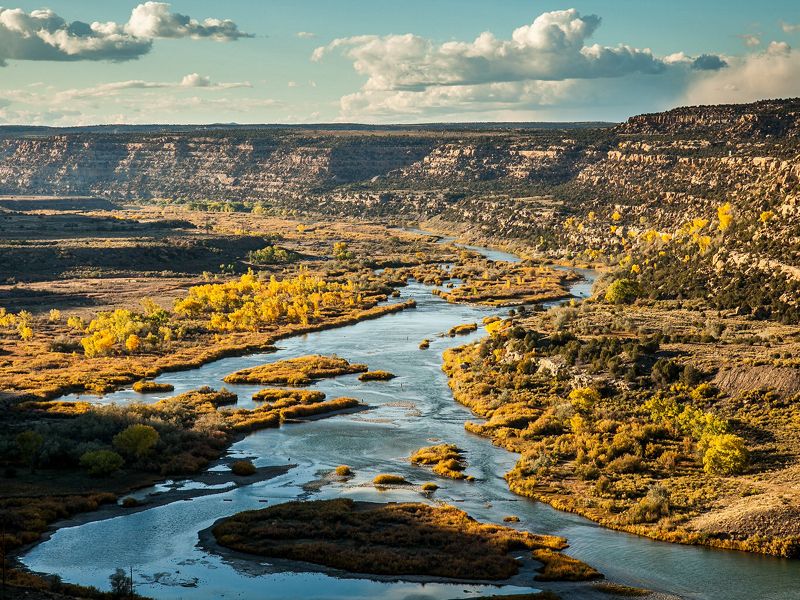
San Juan River The San Juan River is a major tributary of the Colorado River © Erika Nortemann/TNC
On a sunny and calm day in late June, a group of diverse partners gathered along the San Juan River in Farmington, NM, to celebrate a first-of-its-kind agreement between a Tribal Nation, state government and conservation NGO and a historic release of water designed to benefit both nature and people.
This celebration was the culmination of years of work to develop a win-win-win solution for addressing the ongoing drought within the Colorado River Basin. At the crux of this, knowing that to really make a difference for the river we need to tackle the crisis differently, we need to work together on all fronts, find common ground and not be afraid to try new things and test solutions. Every solution should have multiple co-benefits and every drop of water will need to do quadruple duty, meeting multiple needs, as it flows downstream.
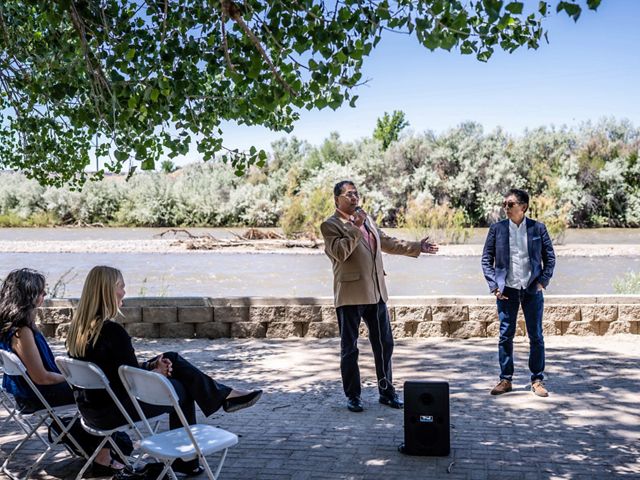
Tribal Water and the Jicarilla Apache Nation
Indigenous Peoples have been stewarding the vast and varied lands and waters of the Colorado River Basin since time immemorial. Today, 30 Tribal Nations hold senior water rights, equivalent to about 20–25% of the water in the Basin. These Tribal Nations bring important leadership and unique perspectives to Basin-wide efforts to find lasting solutions to the pressing water scarcity challenges that face the millions of people who rely on this incredible river.
The Jicarilla Apache Nation is located in north-central New Mexico and spans more than 870,000 acres. The Nation has more than 45,000 acre-feet of settled water rights in the San Juan River Basin, which are presently used for cultural practices, domestic supply, economic development, environmental, and other purposes.
Stay connected
Updates from the conservation world and how you can get involved.
Access to water is fundamental to the right of the Nation to use and enjoy its lands and to provide for the needs of its people. The Nation’s water rights secure access to water for the Nation to conduct cultural practices, provide drinking water to its community and supply water for other domestic and commercial purposes on the reservation. These uses, however, currently require only a small portion of the Nation’s water. The remaining water has historically been used for economic development.
For the last several decades, the Nation leased water to coal-fired power plants that are now facing closure. This transition presented a new opportunity for the Nation, the state of New Mexico and TNC to work together.
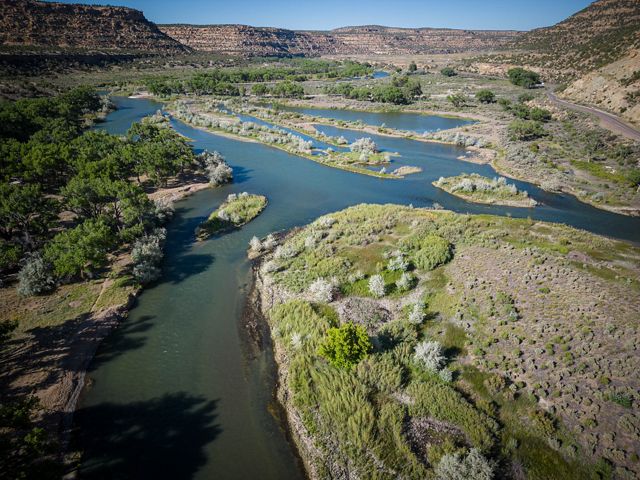
The Agreement
This new opportunity gave way to a new partnership between the Nation, TNC and the New Mexico Interstate Stream Commission (ISC). The ISC is the state water management agency that has broad powers to investigate, protect, conserve, and develop New Mexico’s waters, including both interstate and intrastate stream systems.
The partners worked together to design a new innovative water-sharing project and in January 2022, the partners signed an agreement that allows the ISC to lease up to 20,000-acre feet of water per year (for 10 years) from the Nation to benefit threatened and endangered fish and increase water security for New Mexico.
Protecting Endangered Fish
With input from scientists, hydrologists and representatives from the Endangered Fish Recovery Programs, the first water release, made possible by this partnership, happened over two days in June 2023.
This release provided an additional two days of high peak flow onto releases previously made by the Bureau of Reclamation. The releases were designed to meet flow targets recommended by the San Juan River Basin Recovery Implementation Program to support two endangered fish, the Colorado pikeminnow and razorback sucker.


There is broad consensus among scientists and experts in the basin that these high peak flows, which clean fine sediments from cobble spawning beds and create habitat conditions for rearing these fish, are the most critical missing component limiting the recovery of the species.
As a component of the water sharing agreement project, the project partners, in consultation with the recovery program, are developing an adaptive management and monitoring program. They will be installing water level recorders and wildlife cameras at 8-12 sites along the river and in the coming years will use this data to both refine and improve the release patterns and assess their effect on endangered fish recovery.
Looking Ahead
The Nation, the ISC and TNC hope this project can serve as a model for water sustainability within the basin.
Quote: Celene Hawkins
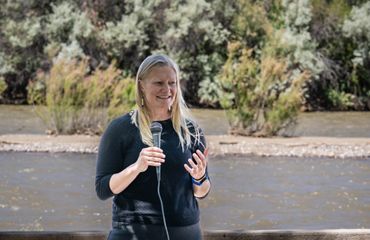
The Basin’s tribal nations are among the most important leaders and partners in efforts to find lasting solutions to the pressing water scarcity and ecological challenges that face all who rely on this incredible river.
